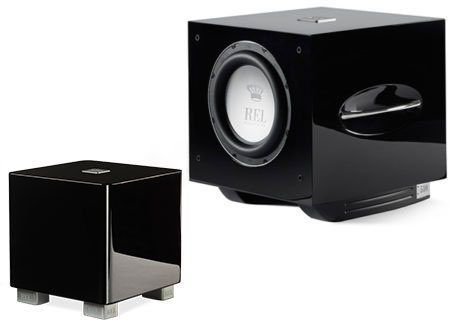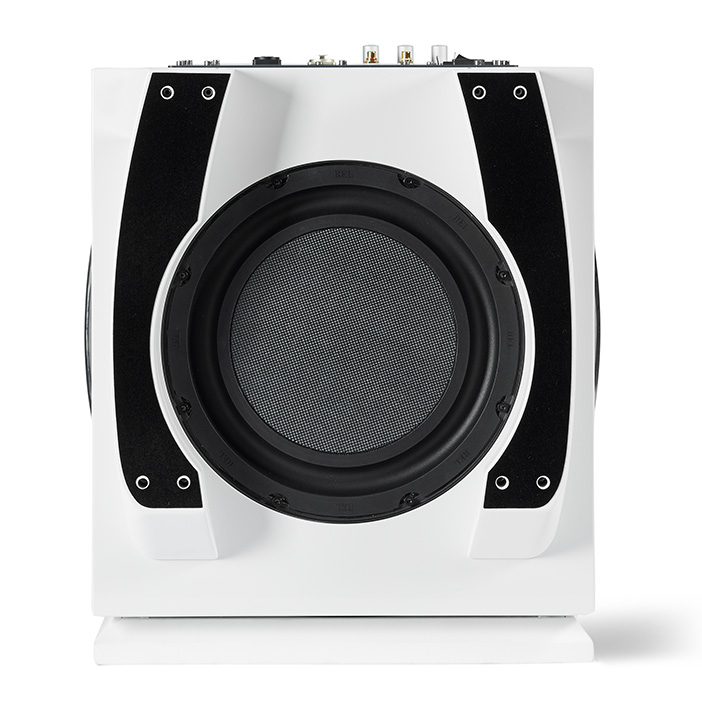Blog
Down Firing vs. Front Firing Subwoofer

Updated September 18th, 2021
The question comes up fairly frequently – which is better, down-firing or forward firing? As with most things in audio, the answer is not as simple as one or the other. But we can walk you through a primer pretty quickly that will identify what each does well and share with you how we prioritize these into our offerings.
The case for down firing requires an understanding that by firing at the floor in close proximity to that large, flat surface, we take advantage of the single largest plane in a typical house. Bass emerges from the down firing driver hits the floor and essentially crawls along the floor producing particularly deep bass. The floor couples with the driver and becomes part of the working design of the subwoofer. Furthermore, this acoustical coupling produces more output for the same amount of power. These are all free benefits, so why don’t we just build nothing but down firing subwoofers?
There’s more to making state of the art bass though than just raw output and more than simply how deep the bass goes, although both of those are prime directives for our engineering team. Speed, clarity, precise intonation of individual tones, air and the way compressed air masses strike one’s body (think of the kick drum in a modern traps set), decay patterns being correctly reproduced all play pivotal roles in truly special systems.

These characteristics are where fast, lightweight, direct-firing drivers come into play. Forward-firing drivers produce all of the characteristics listed above far better than down firing drivers and can result in bass that sounds fast and airy while at the same time highly impactful –a characteristic that is blunted in down firing designs. Kick drums, explosive effects in movies, gunfire, delicate shimmering infra bass as produced by pipe organs; all these benefit from exceptionally fast, forward-firing designs.
The ideal design would offer both forward AND down firing drivers, especially where the amount of cabinet volume in a medium sized subwoofer is limited by practicality. Which is why we limit down firing-only subwoofers to our entry level models like the T/5x and Tzero MKIII. Above that in each of our 2 core ranges, we offer designs that feature extremely high quality, fast forward-firing drivers coupled to unique down firing passive radiators. This approach truly delivers the best of both worlds. The speed, intonation and pitch accuracy necessary for great musical reproduction, as well as the kick and slam needed for home theatre and rock. Tech and other forms of aggressive bass-heavy music all benefit from fast, deep front-firing drivers.
The down firing passive accounts for the deepest, lowest notes being compressed downward, then rippling outward along the floor. This naturally reinforces the longest waves that reproduce the lowest notes responsible for the sense of awe when hearing music in a huge space such as Notre Dame’s cathedral. But it is also used by the sound designer of your favorite science fiction movie when he or she adds the faintest of deep echoes into the soundtrack at just the moment that an image of the vastness of space appears onscreen.
In the end for subwoofers that are relatively compact*, when the question is asked “Down firing or forward firing?” our answer is a firm “Yes”. This double action that we refer to as Multi Modal Bass delivers the best of both approaches. It allows us to keep the cabinet size relatively compact while producing deep and fast bass that energizes a room evenly; resulting in smoother, more uniform response throughout the room than a single mode designs can offer.
*Pro Tip: Reference subs are allowed to be larger in every dimension, so size and scale allow us to deliver forward firing designs backed up by large reservoirs of current in their power amplifiers. This scale in physical size and power are what permits fast, forward firing designs to energize rooms fully and completely.











